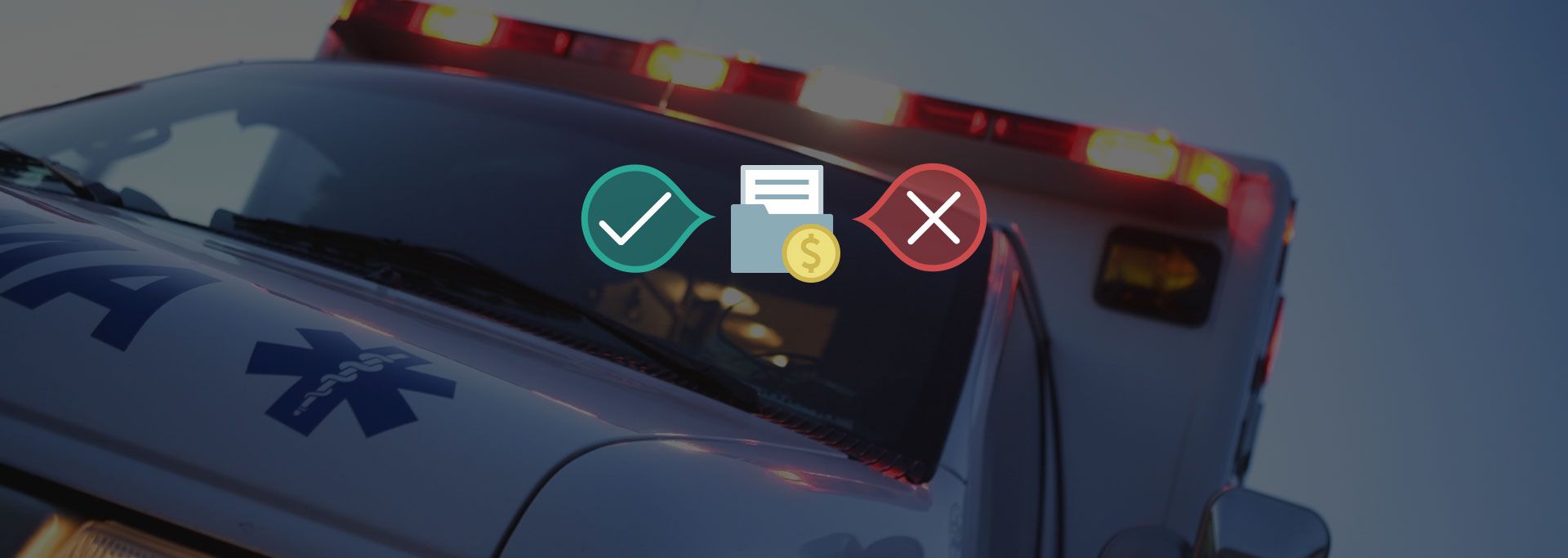When a Medicare beneficiary is transported by ambulance from one facility to another, it is very important to understand how to determine who is responsible for that Inter-facility transport. This determination must happen before any Medicare billing is completed. *The US ambulance services industry includes about 5,400 establishments (single-location companies and units of multi-location companies) with combined annual revenue of about $15 billion. **The government estimates that the taxpayer funded Medicare program loses $250 million per year because of fraudulent billing related to EMS services and ambulance transports.
In this post, we will share how to identify inter-facility transports appropriately and how to determine who is responsible for these ambulance transports, Medicare, or the facility. Although the ambulance industry is relatively small in the overall healthcare world, the adverse effect of improper handling of ambulance transports has a huge effect on these companies and the Medicare program. Here are a few indicators to ensure you are billing appropriately.
What is Billing for interfacility trips – do’s and don’ts?
Billing for Inter-facility trips do’s and don’ts is about ambulance transports of Medicare beneficiary’s that are identified as interfacility transports when the ambulance transport’s origin and destination are between medical providers, (facilities) e.g., a hospital, critical access hospital (CAH), skilled nursing facility (SNF). It is also determined by patient status: Inpatient versus outpatient.
Why is Billing for interfacility trips – do’s and don’ts Important?
- Provider Numbers:
- In order to determine if a facility is responsible for an inter-facility transport review the provider numbers. If they share the same provider number, then the trips would be the responsibility of the facility.
- Campus:
- Campus means the area immediately adjacent to the main campus within 250 yards or any other areas determined by CMS to be part of the providers campus.
- If the campuses of the two providers are the same, then this trip would be the responsibility of the facility.
- If the campuses of the two providers are different, then we need to review the patient status.
- Patient Status:
- Inpatient: Facility responsible
- All other status: Outpatient to Inpatient, Inpatient to Outpatient, Outpatient to Outpatient is not the responsibility of the facility and would be billable to Insurance, if coverage is available.
- If all the above criteria are not met, the trips would be billable to Insurance, if coverage is available.
- If either the origin or destination of the ambulance transport is the beneficiary’s home, this transport is not facility responsible and would be billable to Insurance, if coverage is available.
- Discharge Status:
- Hospital providers must ensure the appropriate discharge status code is selected when discharging any Medicare beneficiary to avoid incorrect payments.
So, to ensure your inter-facility ambulance transports are billed correctly to either Medicare Part B or if they fall under Facility responsibility, follow the simple “do’s and don’ts” provided. Or if you are looking for a Revenue Cycle company with a great reputation and experienced staff to ensure you are and remain complaint in all aspects of billing, reach out to an Integra Connect employee.
Sources:
*Dun Bradstreet The US ambulance services industry includes about 5,400 establishments (single-location companies and units of multi-location companies) with combined annual revenue of about $15 billion. https://www.firstresearch.com/Industry-Research/Ambulance-Services.html
**Report Medicaid Fraud. The government estimates that the taxpayer funded Medicare program loses $250 million per year because of fraudulent billing related to EMS services and ambulance transports. https://www.medicaidfraudhotline.com/fraud-ambulance-ems-scams.php
